Weekly round-up: 04 - 10 June 2014
Funny old things, the seasons. Us birders see things rather differently to the rest of the world – whereas technically midsummer’s day is just around the corner, it’s still late spring where overshooting migrants are concerned, as was amply borne out this week with a good spread of rare and scarce birds, including many a singing warbler. More of which anon...
Meanwhile, parts of the UK this week would have known it was summer. The usual portents were all there - Swallows swooping overhead, blokes in high-vis vests drinking tea beside their road-works on the motorways, the Environment Agency issuing flood warnings... Summer storms and cloud-bursts aside, high pressure over Scandinavia opened the door for some birds from the continent, and expectations were high in some quarters...
For all those high hopes, it was lingering birds from the previous week that stole the headlines, some of which were more obliging than others. The ‘biggy’ didn’t land this week, but there’s time yet...
Back in the day, my timing in 1999 couldn’t have been worse for heading down to Cornwall for a week in October – we managed to miss by a gnat’s whisker the historic week that saw Scilly notch up a triumvirate of mouth-watering thrushes and, most painfully of all, Britain’s first Short-toed Eagle. The latter particularly hurt – missing a first for Britain always does. Fast forward to this year and I am discovering that missing subsequent examples of the species hurts every bit as much, even when that bird is a sea-crossing and several hundred miles away. It’s just one of those birds...
In what qualified as the nearest thing to a ‘new’ mega this week, Hampshire birders would have been delighted when news broke early on the morning of 8th that the previous week’s individual from Dorset had been re-found not a million miles away in Hampshire at Bishop’s Dyke. Rather less obliging than during its previous showing, the bird was available for just a few brief hours that morning for those in a position to react quickly enough.
What next? Well, with east Dorset and west Hampshire offering plenty of good habitat, you could have been forgiven for thinking this stunning bird would surely stick around a while longer. Finding it, on the other hand, would be a different matter altogether. Needles and haystacks spring to mind. What then the odds that it would turn up again on the morning of the 10th in Ashdown Forest (East Sussex)? But sure enough, that’s just what appears to have happened. The bird would seem to be heading along the coast (shades of the unacceptable Booted Eagle of days of yore…), so eyes open in Kent in the next 24 hours…
In a week that featured rare and scarce warblers of several species singing away at locations the length and breadth of Britain, one bird continued to boss the headlines – the superb Spectacled Warbler at Norfolk’s Burnham Overy. Many birders have made the pilgrimage now to catch up with this bird, and its remaining for a weekend will have doubtless proved popular. At the time of writing it’s still happily on-territory.
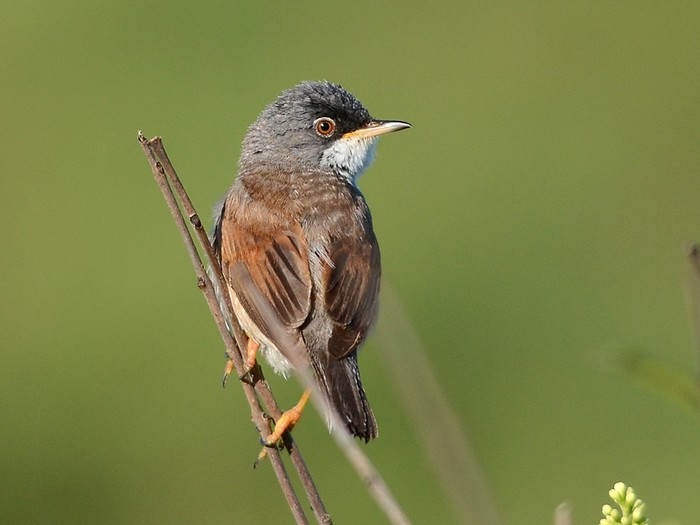
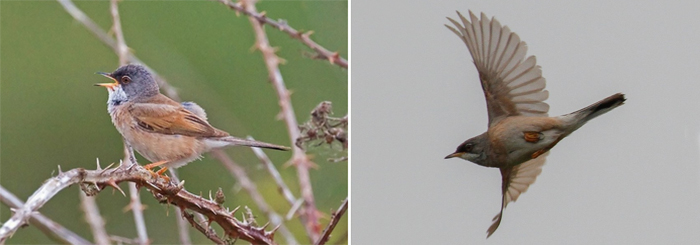
Of the past seven records on the British list, the birds at Landguard (Suffolk) in 1997 and on Scilly in 2000 constituted the longest stayers, managing a week apiece. This striking bird has joined (and now exceeded, with a stay of nine days) that illustrious club and, having been seen nest-building, may be in it for the long-haul and destined to hang around for a little while yet. Sylvia warblers have an endearing habit of building cock-nests in the hope of attracting a mate; while a lady Spectacled Warbler might be something of a long-shot, this bird will doubtless attract many a birder for as long as it’s there.
While the previous two headline birds could be forgiven for thinking they weren’t too far off the mark for what passes for reasonable summer habitat, Devon’s fifth Ross’s Gull couldn’t be further adrift from the species’ usual high Arctic habitat if it tried. Present this week at Topsham and Bowling Green Marsh (and sometimes sharing the site with Bonaparte’s Gull) this dainty, unseasonal gull continued to offer birders an alternative to the usual bone-chilling conditions associated with catching up with the species in the UK.
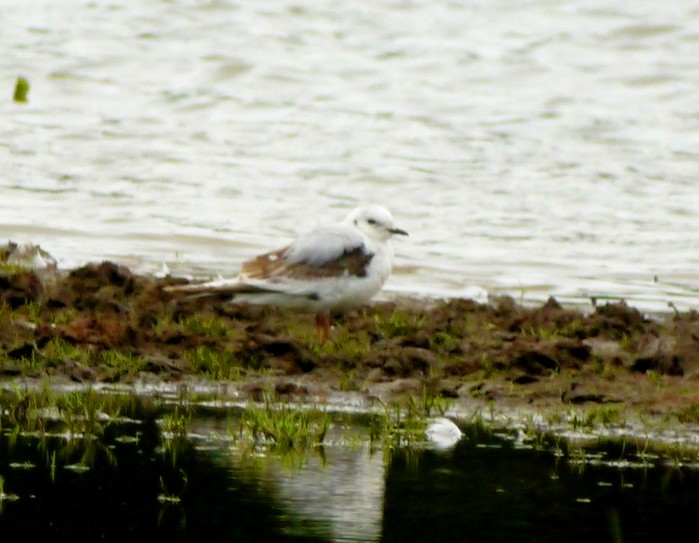
Whilst in Germany a fine Black-browed Albatross was still showing well on Helgoland, there was no such exotica on offer a short-flight away in British waters this week. Pomarine Skuas were logged off Blackpool (Lancashire) on 4th, Portland (Dorset) on 7th, and Splash point (East Sussex) on 9th. Portland was the epicentre of all things Balearic Shearwater related during the week with birds seen daily in small numbers – 37 were logged, with 12 on 7th representing the best day-count. Elsewhere, Devon’s Berry Head accounted for two birds on 6th and a singleton on 7th; a further single bird was sighted from the Scillonian crossing on 6th; a singleton passed Dorset’s Durlston Head on 9th; and a duo passed Cornwall’s Gorran Haven on 10th.
It was a good week for variety where Herons, Egrets & allies were concerned, with some choice birds to be seen. Top of the bill goes to Black Stork: one was seen in Norfolk over Hickling on 4th; in nearby Suffolk one was seen over Pakefield, Kessingland and Covehithe on 5th; and on 10th one closed out the week at Scarborough (North Yorkshire). The week’s sole White Stork was also seen on 10th, at Abington (Clyde).
Somerset meanwhile had a strong showing with Cattle Egret at Steart on 6th and 8th and at Huntspill on 9th, and a Night Heron at Shapwick Heath on 7th. Two further Cattle Egrets were still at Tacumshin (Co.Wexford) on 8th.
Elsewhere, records of Purple Herons came from Marazion (Cornwall) on 4th-7th and Skokholm (Pembrokeshire) on 8th; and a Squacco Heron was at Ouse Washes RSPB (Cambridgeshire) on 9th-10th.
Glossy Ibises remained omnipresent across the country even up into the very far north where the wandering bird in Shetland was noted at the Loch of Spiggie on 4th. A little further south, North Ronaldsay’s individual emerged from the island’s capacious iris beds on 5th-6th. Is this the same bird wandering back and forth between the two island groups? Answers on a postcard...

Back down in the far south of England at Dungeness (Kent) the single bird stayed put until 10th; across in the south-west at Coward’s Marsh (Dorset) a bird remained there until 10th also. Other now familiar birds remained at Otmoor (Oxfordshire), Rutland Water (Leicestershire) until 9th at least, and in the Dearne Valley (South Yorkshire) until 10th, whilst a further bird was noted in Nottinghamshire at Besthorpe NWT on 4th. Across in Ireland the sole record came from Coonagh (Co.Limerick) on 7th.
Records of Great White Egrets were comparatively few and far between, with just seven birds reported: at Leighton Moss (Lancashire) and Welney (Norfolk) on 5th; at Thornham (Norfolk) and Paxton Pits (Cambridgeshire) on 7th; over Arundel (West Sussex) on 8th; at Walberswick (Suffolk) on 9th; and at Stanwick GPs (Northamptonshire) on 10th.
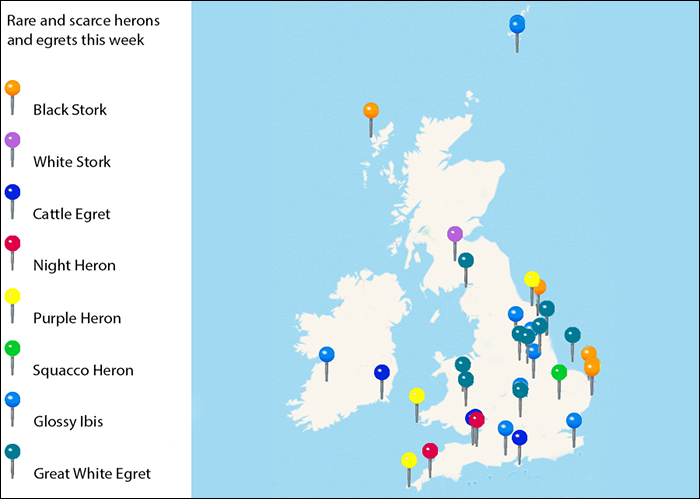
Wandering Spoonbills on the north Norfolk coast proved a bit of a handful to keep track of: suffice to say, at any point during the week between one and three individuals could be found at one of Cley, Burnham Overy, Holkham, Holme or Titchwell. Three were noted at Holme on 7th, at Cley on 8th , and Burnham Overy on 10th – five birds were seen at Cley on 9th-10th. Elsewhere in East Anglia reports came from Suffolk in the latter half of the week with an individual still at Boyton & Hollesley Marshes RSPB on 7th; a singleton at Minsmere on 8th-9th, with three birds flying in off the sea at Southwold on 8th, and two birds at North Warren RSPB that day; and a single bird over Walberswick on the morning of the 10th.
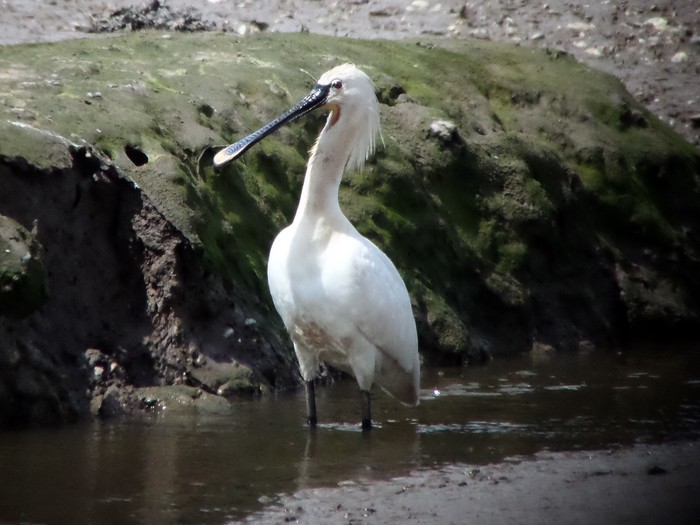
Cambridgeshire accounted for a single immature at Burwell Fen on 7th, and an adult and three immature at March Farmers on the 7th also; numbers at the latter site rose to six birds on 9th. Lincolnshire logged birds at Frampton still on 5th, and at Gibraltar Point on 6th, rising to two birds at the latter site on 7th. Also in Lincolnshire were two birds at Willow Tree Fen on 7th-9th, and two birds seen flying over Donna Nook on 9th. Duos were noted in Northumberland at Cresswell Pond on 5th rising to four birds on 9th, and finally five birds on 10th; and at Druridge Pools on 4th-5th, rising to three birds on 8th, six birds by 9th, and back down to four birds on 10th. A further duo flew past Spurn (East Yorkshire) on 9th. Singletons were noted at Bowling Green Marsh and Exminster Marshes (Devon) on 4th-7th, at Cliffe Pools (Kent) on 6th-8th, Musselburgh (Lothian) on 7th, and Blithfield Reservoir (Staffordshire) and Leighton Moss (Lancashire) on 8th. In East Sussex four birds flew past Rye Harbour in the morning of 10th.
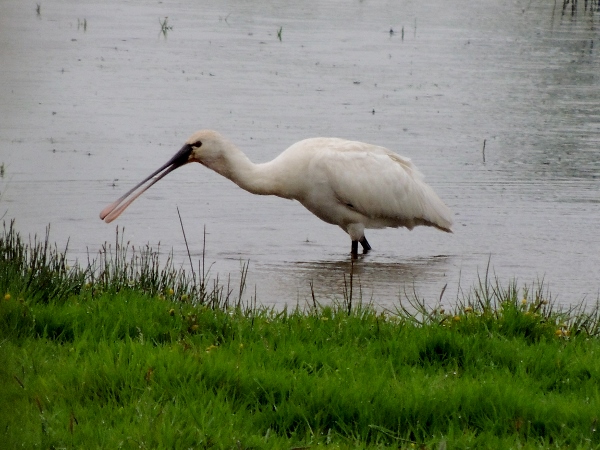
Common Crane reports were thin on the ground this week, with just two records logged: one seen overhead on 5th-6th at Otmoor (Oxfordshire) and then again later over Oxford and two birds seen over Minsmere (Suffolk) on 6th.
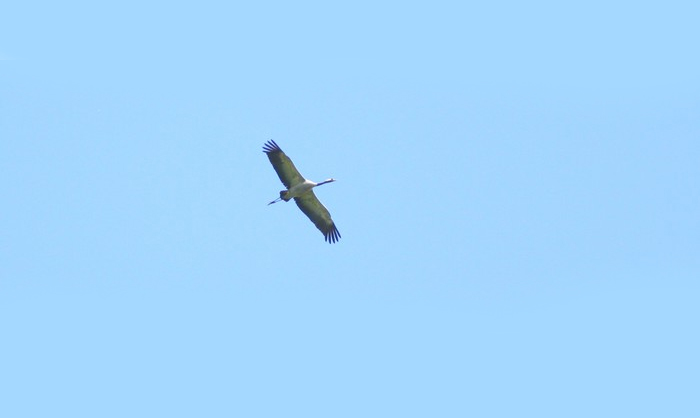
Wildlfowl watchers were firmly into the midsummer doldrums this week with not a lot of rare birds to be seen, and hence not a lot to report. Chin up, duck-fans: not long now until those Aberdeenshire scoter flocks gather a critical mass and there’s the chance of something interesting emerging from the heat haze (and hopefully not the genuinely terrifying, naked, hymn-singing lunatic who stalked me from the dunes when I was trying to see the Black Scoter off Murcar in 2011)...
A somewhat stronger showing from the ducks, with a bit more variety to report upon, and starting with two Green-winged Teals, both in Ireland: drakes at Tacumshin (Co.Wexford) still on 5th-7th, and at Portmore Lough (Co.Antrim) on 6th. A trio of drake American Wigeons were logged in Scotland, at Balnakeil (Highland) on 4th, on Tiree at Loch a’ Phuill (Argyll) on 8th-10th, and at Loch na Reivil on North Uist (Out Hebrides) on 10th.
Ireland accounted for three quarters of the weeks Ring-necked Ducks, these being a drake in Co.Down at Quoile Pondage on 4th-5th, and two drakes in Londonderry at Lough Beg on 8th. Scotland laid claim to a final drake at Murton GP (Angus/Dundee) on 9th-10th. Meanwhile Cheshire held onto the drake Lesser Scaup until 10th.
The aforementioned Aberdeenshire scoter flocks yielded a drake Surf Scoter off Blackdog on 7th-8th. Both of the weeks King Eiders were also in Scotland – the drake a short way up the coast in Aberdeenshire on the Ythan Estuary still until 10th, and the female at Musselburgh (Lothian) until 8th.
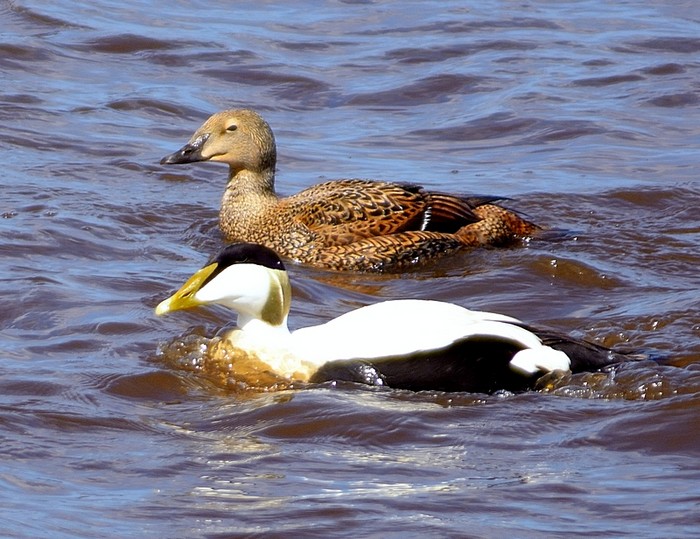
Some lingering quality in the wader news this week, with two American sandpipers rolling over into the new period, Mediterranean glamour on the south coast, and some phalaropes. So with no further ado...
Cleveland’s Cowpen Marsh held onto its Buff-breasted Sandpiper, whilst down in Suffolk the Pectoral Sandpiper remained at Trimley Marshes, both being present until 6th.
The last review I wrote back in May saw me speculating where some of the spring’s exceptional flock of 10 Black-winged Stilts could have got to. Well, now we know – and with two pairs being closely monitored in the south of England, it’s fingers crossed time for a happy conclusion to this occasional but always exciting extralimital breeding event. The pairs remained on station at Cliffe Pools (Kent) and Bracklesham Bay (West Sussex) all week. Elsewhere, a single bird was to be found in West Sussex at Barnham until 8th at least.
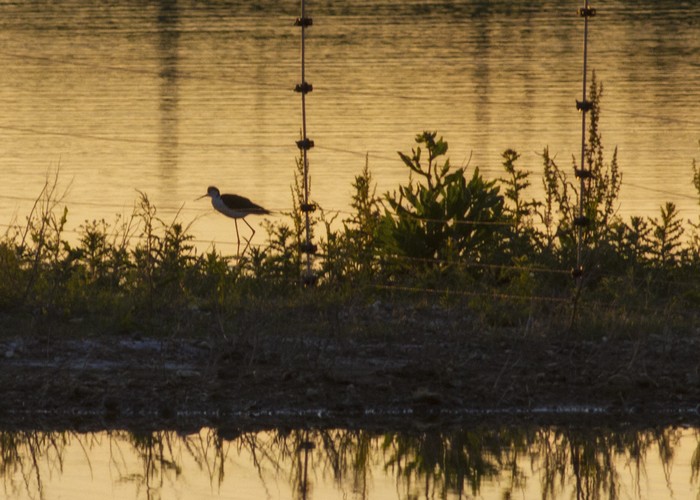
Away from their breeding grounds in the north, Red-necked Phalaropes were noted at Burton Mere Wetlands (Cheshire) on 5th, flying past Hengistbury Head (Dorset) on 6th, and at Slimbridge (Gloucestershire) on 7th and again on 9th. Finally, a late Dotterel was logged on Fair Isle (Shetland) on 5th.
Sharing the delights of Devon’s Exmouth all week with the headlining Ross’s Gull was a first-summer Bonaparte’s Gull. Both birds remained present until 10th, with a Little Gull also in the area completing a nice set of dainty gulls.
A hint of winter remained with handfuls of Glaucous and Iceland Gulls. The former were outnumbered by the latter – just three Glaucous Gulls were recorded, all first-summer individuals and all in the north of Scotland. One was at Aird an Runair on North Uist (Out Hebrides) on 6th; one was at Achnahaird (Highland) on 6th-10th; and a final bird was at Ardivachar Point on South Uist (Out Hebrides) on 8th-9th. Six Iceland Gulls were logged with a predominantly northerly spread to the records: single birds on Harris at Northon (Out Hebrides) still on 4th-5th; on the Lossie Estuary (Moray/Nairn) on 5th; on Vorran Island, South Uist (Out Hebrides) and Loch of Graemeshall (Orkney) on 6th; and at Big Sand (Highland) on 10th. The only exception to this northerly bias was a first-summer bird noted on Tresco (Scilly) on 9th.
There was a good variety of rare terns noted during the week, headed by Shetland’s fourth live record of Caspian Tern found at Loch of Hillwell on 4th. These large, dynamic terns are rare indeed this far north in the UK, and this bird was the first record in the archipelago since 1987. It was seen flying strongly north in the evening of 4th, and despite a report early in the morning of 5th has not been seen subsequently.
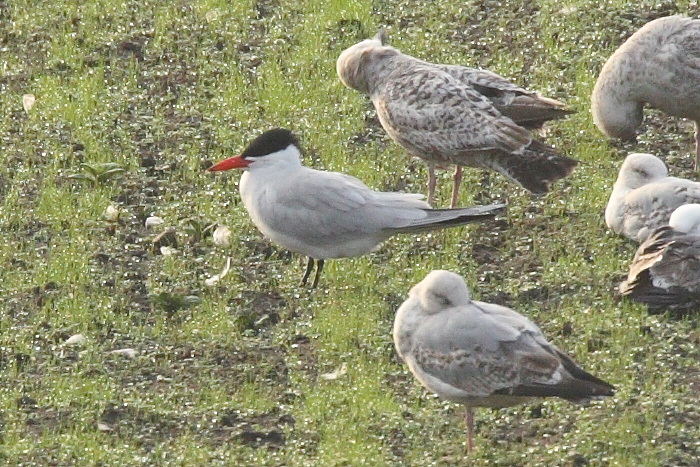

Numerically, Forster’s Tern is a far rarer beast altogether than Caspian in Britain and Ireland – having said that, the adult found in the tern colony at Inishroo is almost unremarkable for Co.Galway, that county having hosted an impressive 12 records of the species, albeit most of these involving what is presumed to be the same annually returning individual.
Elsewhere, the Out Hebrides’ second Whiskered Tern remained on Berneray at Loch Bhrusda on 4th, and an adult White-winged Black Tern was seen briefly at Saltholme RSPB on 8th.
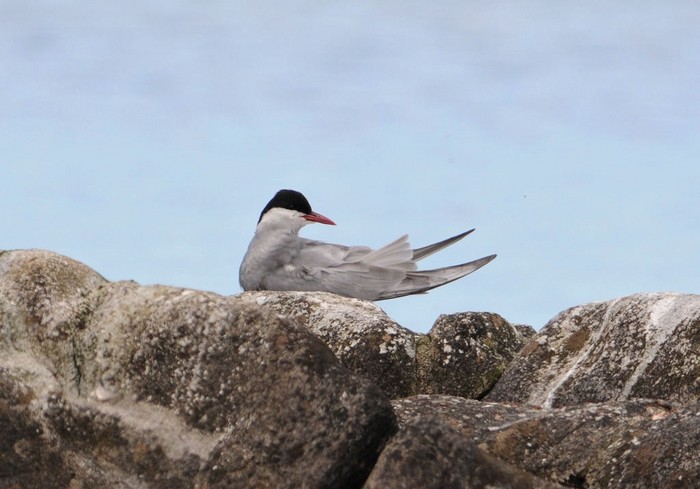
Raptor news was, of course, dominated by the relocation of the Short-toed Eagle in Hampshire. Further tantalising reports of eagles bubbled up during the week, with possible eagle sightings logged over Lynford Arboretum (Norfolk) on 6th, and Mount Hawke (Cornwall) on 9th. More substantial by far was the wandering White-tailed Eagle noted in Orkney on 5th at Evie; with another possible of these 'flying barn doors' reported on 10th from Lakenheath (Suffolk).
A Black Kite was seen at North Creake (Norfolk) on 6th; two further reports on the same day one at Broughton (Clwyd) and a possible at Newton Marsh (Lancashire), and a further report came in on 9th of a bird over Wolvey (Warwickshire). A probable male Red-footed Falcon was reported on 9th in Shetland at Baltasound on Unst.
News of Montagu’s Harriers was dominated by a dark morph bird in Suffolk at Stoke-by-Nayland on 5th. Further first-summer males were seen on 7th in Suffolk at Minsmere, and in Norfolk at Titchwell. A ringtail was seen over Gibraltar Point (Lincolnshire) on 4th.
Away from the usual raptor viewpoints, there were wandering Honey Buzzards reported from as far north as Shetland this week. One was over Gibraltar Point (Lincolnshire) on 4th (and another there on 6th, and another on 10th); on 5th birds were logged at Flamborough Head (East Yorkshire), Minsmere (Suffolk) and Eastriggs (Dumfries & Galloway); one was over Sheffield (South Yorkshire) on 7th; the 8th proved a busy day, with birds seen in Norfolk over Potter Heigham, Pensthorpe Waterfowl Park, and Hickling Broad, and elsewhere over Cookney (Aberdeenshire) and Leyton (London); birds were noted on 9th at Alwalton (Cambridgeshire), Frampton-on-Severn (Gloucestershire), and heading south over several locations in Shetland, namely Rerwick, Sumburgh, and Fair Isle; and on 10th a dark morph bird was seen in Norfolk at Ludham Bridge.
Last but by no means least was news from Ireland of a Snowy Owl reported at Black Head (Co.Clare) on 5th.
There were singing rare and scarce warblers aplenty this week, so with we’ll kick off the passerines with these displaced songsters. Spectacled Warbler aside, potentially topping the bill was a probable singing Iberian Chiffchaff up in Orkney on Rousay on 7th. If confirmed, this would be a first for the county.
Singing male Greenish Warblers were on South Uist at North Locheynort (Out Hebrides) on 7th, and Tyninghame Bay (Lothian) on 7th-10th. Elsewhere individuals were logged on Fair Isle (Shetland) on 6th, and Skomer (Pembrokeshire) on 7th.
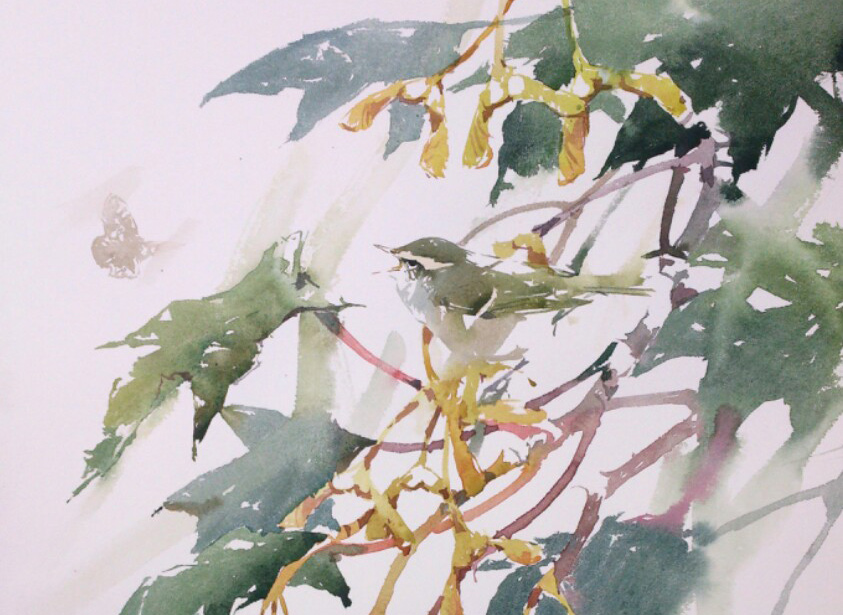
Check out his Twitter feed or visit his website (© Darren Woodhead)
Shetland laid claim to two singing Great Reed Warblers this week, with one in the central mainland at Swining still on 4th-7th, and one in the south mainland at Sandwick on 8th-9th. A further bird was at Cresswell Pond NWT (Northumberland) on 4th.
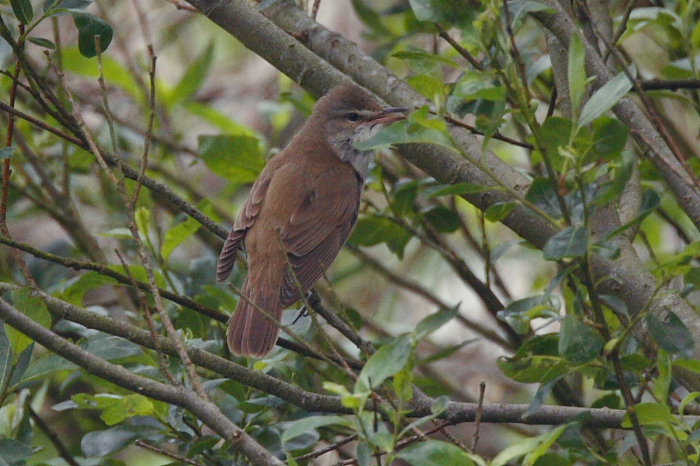
Two Blyth’s Reed Warblers were trapped and ringed during the week, continuing this spring’s fabulous showing for the species, one at Spurn (East Yorkshire) on 6th and a second on Bardsey (Gwynedd) on 7th, the latter singing nearby later on.
Marsh Warblers knocked on the door of double figures this week with some ten birds recorded. Fair Isle (Shetland) had at least one bird present all week, with two trapped and ringed there on 8th, and two still present there on 10th. Elsewhere in Shetland birds were noted at Voe on 5th, Sandgarth on 6th, Wester Quarff on 7th-8th, and at Skaw on Whalsay on 8th. Away from Shetland birds were recorded on Lewis at Bragar (Out Hebrides) on 8th, Old Head of Kinsale (Co.Cork) and Frinton-on-Sea (Essex) on 9th, the latter bird being trapped and ringed.
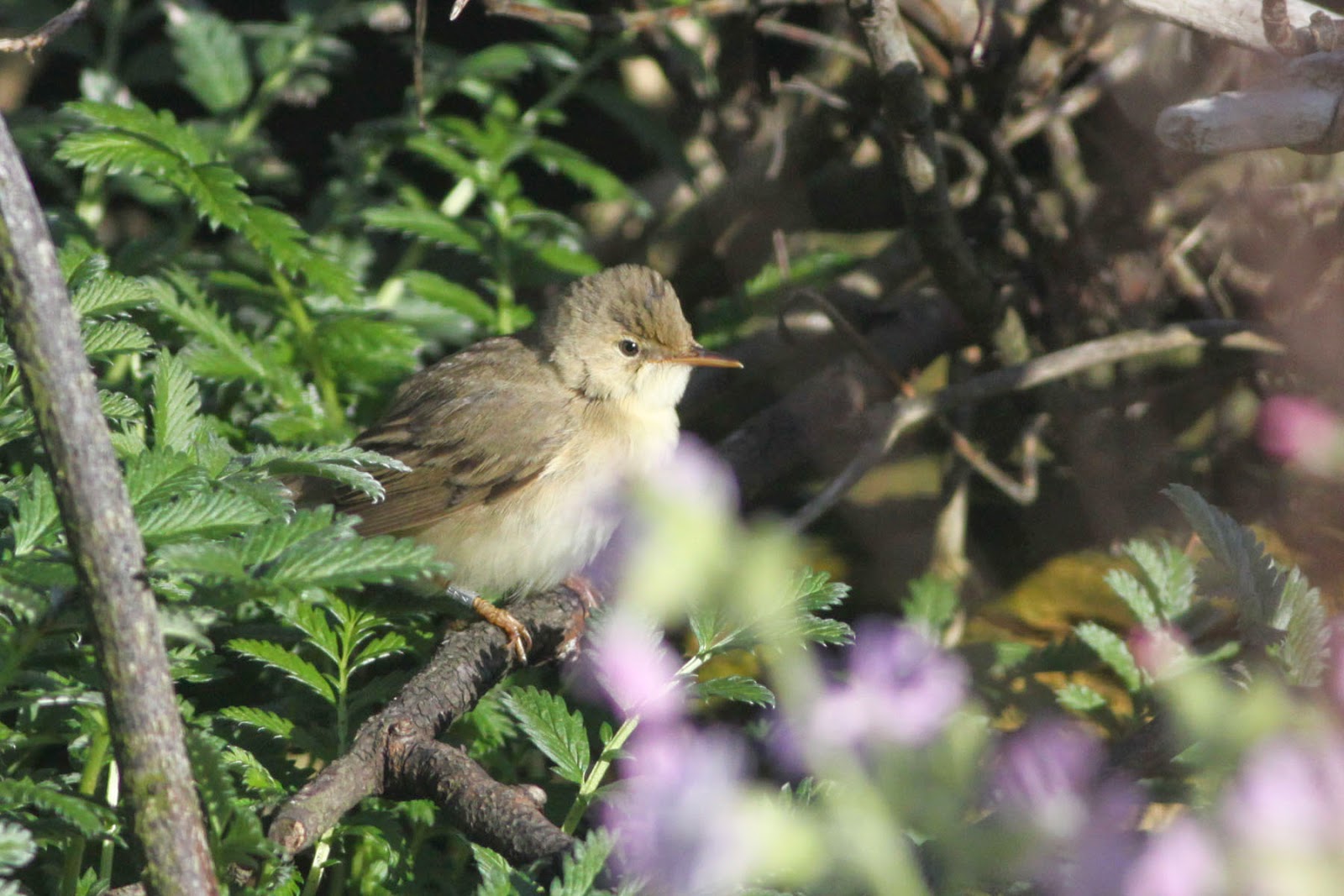
Singing Savi’s Warblers continued to delight, with birds still at Loch of Strathbeg RSPB (Aberdeenshire) until 7th, and Newport Wetlands (Gwent) until 8th. Further singing birds were at Wicken Fen (Cambridgeshire) on 4th, and Walberswick (Suffolk) on 8th-10th.
Savi's Warbler, Uskmouth, Gwent - 31st May 2014 from Paul Taylor on Vimeo.
Three Icterine Warblers bring up the rearguard of the warbler opening salvo, all of them seen this week in Scotland. Single birds were noted on Fair Isle (Shetland) on 5th-6th, on Lewis at Port Nis (Out Hebrides) on 6th, and on St Abb’s Head (Borders) on 8th.
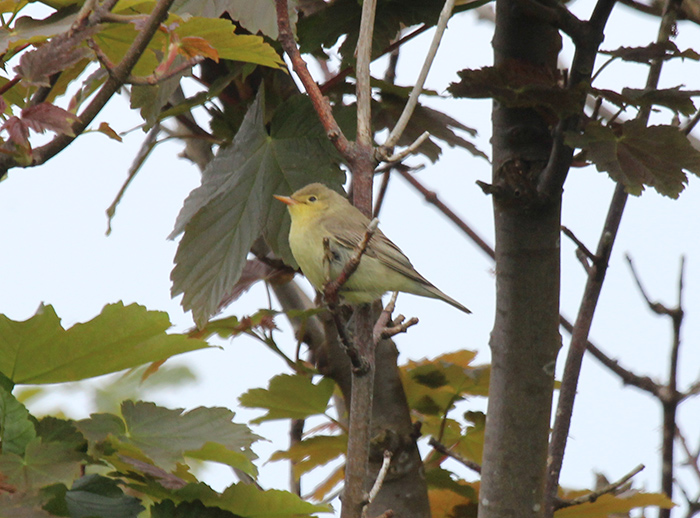
Another week, another spring record of Pallid Swift - this time one over the Observatory garden on Portland (Dorset) on 7th. All of Dorset’s previous records have come in the autumn period - as mooted last week, are these birds being overlooked in the spring? Less subtle altogether are Alpine Swifts and two were reported this week, a 'probable' over Wymondham (Norfolk) on 5th, and one over Braintree (Essex) on 7th.
More colourful fare was scattered around the country this week, though the reports of Bee-eaters all involved frustratingly mobile birds: after two were reported from St Abb’s Head (Borders) on 5th, Dorset laid claim to at least one heard at Burton and three or four over Highcliffe on 7th, the Isle of Wight had three birds flying over Niton on 8th, and Dorset struck back with a bird on 10th.
A trio of Hoopoes were noted this week, with one still in Aberdeenshire at Oldmeldrum until 6th; one in Devon at Newcott on 5th; and one in a private garden at Polruan (Cornwall) on 8th-9th.
Golden Orioles included a number of singing males: birds were heard at Llanfairtalhaiarn (Clwyd) on 6th, and Bryher (Scilly) and Dungeness (Kent) both on 7th. Further birds were reported from Salthouse (Norfolk) on 7th, Sammy’s Point (East Yorkshire) on 8th, and Rode Heath (Cheshire) on 10th, a possible was reported at Houghton Washlands (South Yorkshire) on 5th.
Last week’s first-summer male Woodchat Shrike at Skinningrove (Cleveland) was present until 5th, whilst a female was discovered on Gugh (Scilly) on 8th.
Red-backed Shrikes meanwhile had a strong week, with Shetland getting the lion’s share of the records. At least 30 birds were logged during the last seven days, and only 12 weren’t in Shetland: these being three birds on Orkney’s North Ronaldsay on 7th; and singletons on Longstone, Farnes (Northumberland) on 4th; Corton (Suffolk) and Ladwalk NR (Warwickshire) on 5th; Gramborough Hill (Norfolk) and Longhaven (Aberdeenshire) on 6th; Powderham (Devon), Skomer (Pembrokeshire) and Frampton Marsh (Lincolnshire) on 8th; and Spurn (East Yorkshire) on 9th. Shetland’s birds were scattered the length and breadth of the isles, with a peak count of six birds from Fair Isle (where the species was seemingly omnipresent this week) on 5th.
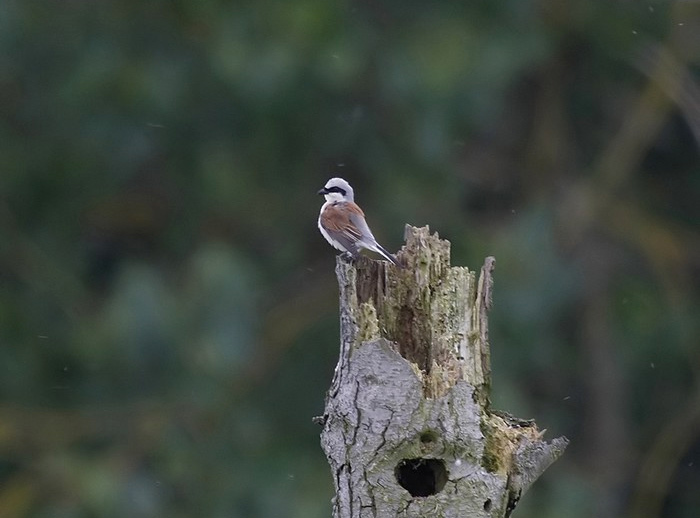

Scotland laid claim to both of the week’s Red-breasted Flycatchers, these being an elusive individual on Shetland at Geosetter on 5th, and a bird on Tiree (Argyll) on 6th.
Rose-coloured Starling numbers picked up this week, hinting at a good summer for this charismatic species. Two were on Scilly on 4th, a female or first-summer male and a male both on St Mary’s. Elsewhere on 4th an adult was at Tywardreath (Cornwall) and a female or first-summer male was further north in South Yorkshire at Moorends, this latter bird remaining there until 7th. A bird frequented a private garden in Looe (Cornwall) from 5th-7th, and another adult was lurking in a private garden at Valley (Anglesey) on 9th.
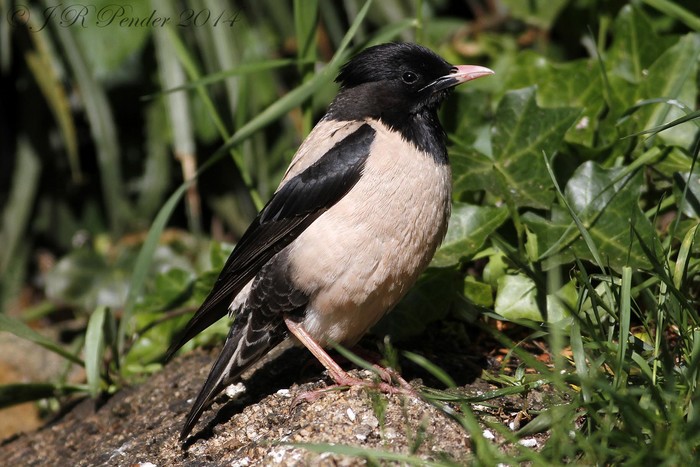
Moving east, a Tawny Pipit was at Lincolnshire’s Donna Nook on 8th.
Fair Isle hosted one of the week’s two Common Rosefinches on 9th, with another bird logged on Spurn (East Yorkshire) on 10th.
And so we come to Loxia corner, where representatives of both of last winter’s invasive species continue to be reported, and to intrigue as to just what’s being going on in the depths of the conifers this spring... In Norfolk at Kelling Heath a juvenile Parrot Crossbill was reported on 6th, with at lewast one possible juvenile there again on 8th. Meanwhile, in Lothian at Tyninghame Bay at least two Two-barred Crossbills were reported on 8th, with three birds (a male and two females) there on 9th, and an impressive seven there on 10th, comprising two males and five females. These represent the first records for the county – and what a way to break that particular duck.
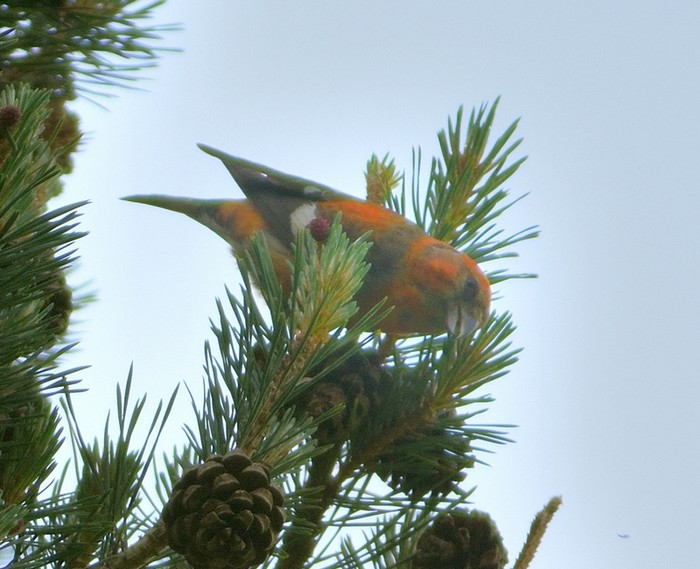
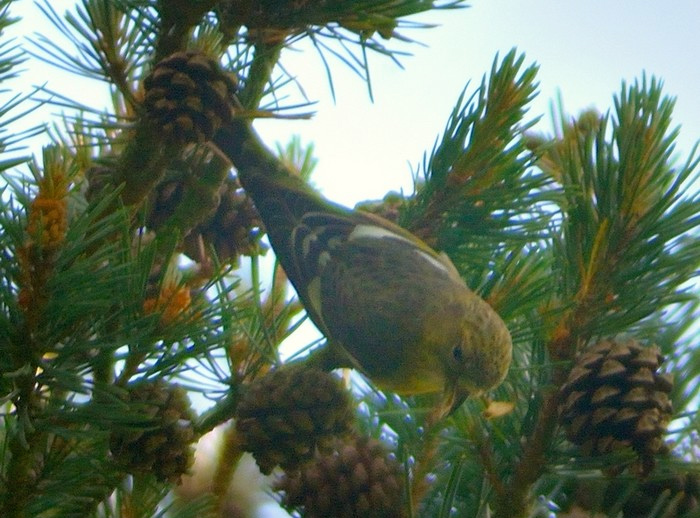
Time now for some crystal-ball gazing. I’m seeing an early reality check in Brazil, and... oh... this is meant to be about birds and not football? Okay then... as June hots up, the tempo of migration might fall away sharply, but the possibility of an absolute monster landing on our shores is ever starker. Rock Sparrow at Cley on 14th June 1981 anyone?
More realistically, a glance at the historic records shows mid June is still a good time for some overshooting passerines, with plenty of records of Subalpine Warbler, Great Reed Warbler and Greenish Warbler. Safe bets, one and all... but for some real midsummer colour, what better than a cracking Roller or male Black-headed Bunting? Both have a good track record of turning up in the coming week, and with records for both from both east and west sides of the country, one could be almost anywhere.
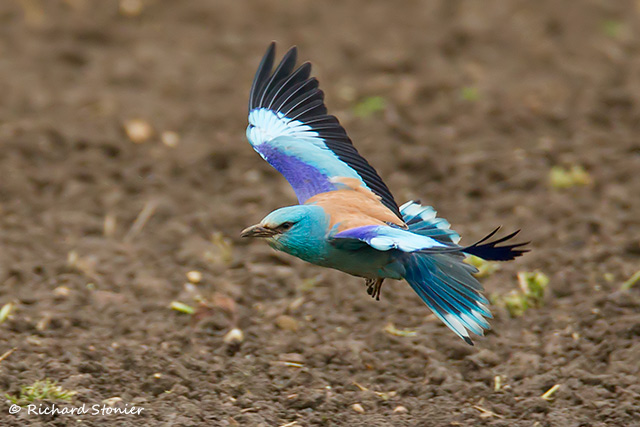
Jon Dunn
11 June 2014
Many thanks to all our contributors for their photos, videos and sound recordings.
Contributors websites













